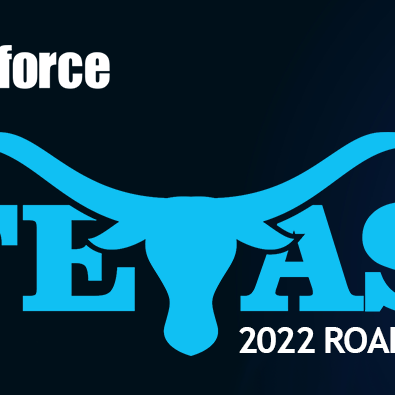
The Hyper Enabled Operator
A Blueforce advisor told us very early on that to truly understand customer pain and the very problems we hoped to solve with our technology, we had to “live a week in the breach”. So we did, and we continue to do so. We spend many, many weeks each year deployed alongside of intelligence analysts, far forward commanders, door kickers, CBRN responders, EOD, investigators, undercover officers, MWD/K9 units, and others. Given the tempo of operations and the collapsed decision space presented by increasingly non-predictive threats, we continue to hear a common refrain: decision makers want nothing to do with a big data problem when responding. The “responder” is too often drowning in data and desires an explicit collision of “sense-making” with data, where and when it meets the commanders intent.
Many members of the Blueforce team were involved in the “knowledge management” (KM) movement in the late 90’s. Pervasive networks provided a foundation for true sharing of data and information to arrive at knowledge, where meaning was derived. Networks enabled collaboration and shared awareness amongst humans, in real-time. Our view of this data-to-information-to-knowledge can be best summed up as follows:
- Data is the recording of a single event. Data can be the single blip that says a VOC reading from an MSA Altair gas sensor is high. It’s one blip though.
- Information is a collection of data points that yields meaning. The aforementioned VOC reading combined with another data point that indicates a responder has switched to SCBA mode on his PPE, combined with another data point that says the same responder’s heartrate has jumped to 160, indicates meaning. Someone has bumped into something in the building that has caused alarm.
- Knowledge is derived when information is shared in real time amongst the responder unit and someone quickly makes sense of what is going on based on previous experience. It’s when the information is pushed, and experience is shared, that sense-making occurs.
DELIVERING ON THE INTELLIGENT EDGE
We continue to hear that the use of the word “edge” is a contemporary and a potentially overused word, but it certainly describes an operational “place”. While organizations and agencies may indeed be centralized, their operations tend to be decentralized. Centralization can be though of as the “cloud” while decentralization can be thought of as the “edge”. The term “Intelligent Edge” is used in many ways, but perhaps the best way to think of it is as a “place”. More importantly, the “edge” is where the operational action lives and is ever present at the very skin of an organization. This is where lives are saved and enemies neutralized.
We started Blueforce in 2005 with a mission to enable edge operations, edge collaboration, and sensor fusion amongst responders and far forward commanders, but also to embrace centralized services and autonomous sensing to augment edge decision making where the decision space is measured in minutes and in worst case scenarios, seconds. To truly accomplish this, three capabilities must converge, indicating every endpoint (human, silicon, or virtual) is capable of:
- Compute: Simple collaboration amongst responders was a great start. Space, weight, and power (SWaP) forces us to imagine what we can do with the mini-computer that is the smartphone, where compute and storage are now quite robust. Now, think about pushing container based AI to the autonomous sensor head where basic pre-processing of imagery (as one example) minimizes data communications by pushing only “recognized” signatures to higher echelon sense makers to include humans and cloud-based recognitional cognitive services. We are there. Compute is now available at the sensor head and at the dismounted operator to enable a fully functional far forward operating unit.
- Connect: We used to rely on WIFI or terrestrial broadband, but non-traditional and adaptive waveforms/MANETs and the use of satcom is now highly available. Bandwidth is largely ubiquitous minus any jamming. But that is the beauty of relying on adaptive IP routing versus static radio waveforms. Whether it MANET, SATCOM, or other, we built Blueforce to ride on any IP network (even those with no backhaul).
- Cloud: Just-in-time cloud services has been the missing element. We now have access to robust cognitive services that expose light interfaces and open standards that can make “sense” of real-time information which augments decision-making by the commander. This includes real-time face detection, face recognition, object ID, and character ID and pushes this capability to the palm of your hand.
While we have been able to share information with those far forward for a long time, data overload was the real villain. Moving events is easy, but deriving meaning was left to the commander. The introduction of the hybrid cloud, where edge based operations fuse with cloud cognitive services, has only recently been realized. Blueforce is proud to be one of the first solution providers to fuse the edge with cloud AI/cognitive services. The trick now is to enable IMMEDIATE connectivity amongst the right people, sensors, and AI-enabled information services to more quickly make sense of what is going on at a scene without the information overload. This is the where the Hyper Enabled Operator becomes a reality. It’s sense-making, where the incident meets the commanders intent enabled by human and silicon sensing, and analyzed by cloud and edge-based AI.
STILL FOR THE EDGE TO WORK…
For some, a history review may be in order. When the founders of Blueforce were in high school, existential threats to the United States were largely “platform-centric” in nature, meaning the actors were predictive as well as their tactics. In 1978, we faced the Soviets where 300,000 men were poised to fight on the Berlin border in a fairly predictable conflict. We knew the tanks, and the fighter aircraft, and the general infantry tactics. Twenty years later, 19 radicals breaking into four teams took down the World Trade Centers and crippled the Pentagon, with a budget of less than US$500K. A highly asymmetric or “multi-domain” threat had become front and center.
This threat model led to a “network-centric” approach for warfare and operations, which is fundamentally about pushing decision process to the tactical edge where response time was of importance. This multi-domain threat model, and enabling the edge to dominate, would be forced to enable a number of capabilities:
- Self forming: Warfighters and responders need to QUICKLY subscribe to other responders, perimeter sensors, and cloud cognitive services in minutes to form a complete and shared operational model.
- Self synchronizing: The endpoints on the network periodically send relevant information such that all endpoints self-synchronize without operator intervention.
- Agile System of systems: As our enemies adapt, we need to adapt as quickly. Rapid adaptation through software-based plugin architectures delivers future-proof and sustainability, and allows construction of domain specific plugins in days and weeks (not months and years). As well and highly important is a standards approach between systems which ensures rapid interoperability.
ENABLING TACTICAL UNDERSTANDING
Connectivity and adaptation are platform enabling capabilities. To enable humans, much less autonomous services, to make sense of events, we needed to create a meta model that describes current state at a periodic interval (our patented “decentralized fusion engine”) which describes a human, unattended ground sensor, cloud service, and/or a localized intel event as a subscribable flow. Meta data most often associated with events includes (but not limited to):
- Location: Geo-location, signal location, and/or computed subterranean
- Atmospherics: WIFI or BLE proximity detection, and/or terrestrial 3G/4G/5G/LTE location
- Environmental: Industrial gas, basic life support, chemical (blister/nerve agent)
- Physiological: Heartrate, body temp, respiratory, pulseOx, GSR
- Collaboration to include geo-tagging, chat, mapping, white boarding
- Streaming media services to include video and audio
- Cognitive Services and AI to the mobile device (wearables OR smart phone OR sensor head)
- HyperLocal Routing: An ability to receive processed intelligence based on where you are at the moment intel is analyzed and validated.
Yet, compute/connect/cloud by themselves, do not ensure edge intelligence. It’s what we do on top of this stack that is organizationally relevant that drives value. This is what we have been working on: An effective human-machine interface that leverages new communications, computing and data/sensing technologies, combined with edge AI/ML which minimizes data and information flow while enabling relevance to one or more responders who are postured to act. This is the core of the Hyper Enabled Operator.
SUMMATION
Current technology enables more than just movement of data, it allows for pre-processing of data and rapid sharing of processed information to highly mobile endpoints which is essential to the Hyper Enabled Operator, but also to cloud AI and cognitive services which shrinks the decision space and allows for a more informed and timely decision. Edge intelligence that drives superior and timely decisions is predicated on:
- Fusing data from different sensor sources, pre-processing at the edge, and making sharable using subscriber interfaces which allows speed of swarm.
- Routing information at the edge which is derived from the data using embedded edge-based business rules and AI.
- Enabling decisions to be made at the flash point where information and action meets the commanders intent.
- Intelligently routing actionable information to the responder(s) who is/are postured to act!
This framework is available now. Blueforce has been delivering on the promise of the hyper-enabled operator since 2014. To learn more, please call us at 866-960-0204 or visit us at https://www.blueforcedev.com/


